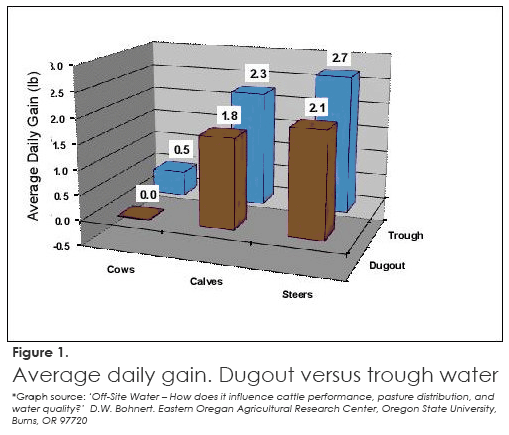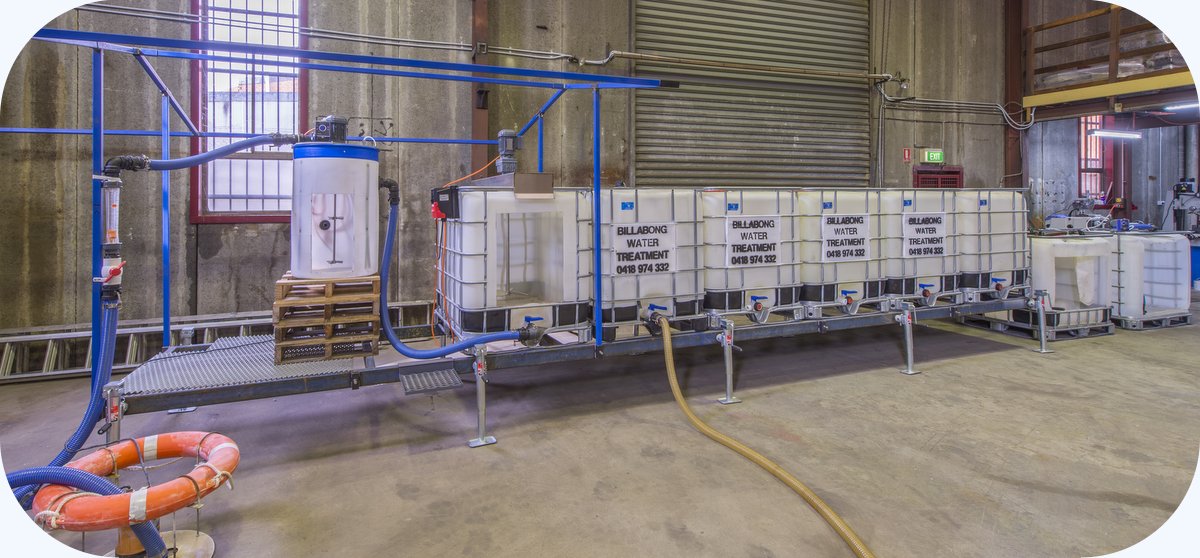Small batch and continuous water treatment plants for livestock in rural industries.
PLANTS RANGE IN SIZE FROM
We at Billabong water have developed small potable drinking water plants for livestock and human consumption. These plants range from 1000 litres in a batch plant and 4,000 to 6,000 litres per hour in a continuous water treatment plant. This plant can be increased in modules giving a maximum of some 24,000 litres per hour of continuous operation. The plants are fixed levelling or portable and levelling, mobile plants being able to accommodate various points of raw water supply be it a dam (billabong), river, creek or bore.
WATER PLANT TREATMENT REGIME
The water treatment regime is to dose the coagulant to produce a sinkable floc that can be removed thus producing a clear clean pathogen free water supply. Final disinfection is available using UV, Hydrogen Peroxide or Sodium Hypochlorite.
BENEFITS

This pathogen free water will produce a 10% to 28%* weight gain per annum in lieu of stock drinking contaminated raw waters. This statement can be readily verified from the scrutiny of scientific papers and publications these being all readily available on the internet.
*Graph source: ‘Off-Site Water – How does it influence cattle performance, pasture distribution, and water quality?’ D.W. Bohnert. Eastern Oregan Agricultural Research Center, Oregon State University, Burns, OR 97720
COST LESS THAN $1.00 PER 1000 LITRES
The cost of producing such waters is less than $1.00 per 1000 litres. This is less than half the average current cost of municipal town water. With an initial plant cost written off over 10 years plus yearly plant R&M, and including chemical production costs, the total yearly water production cost should not exceed $13,000 p.a. for a 4,000 litre per hour water treatment plant operating at 100,000 litres per day capacity.It is left to the livestock producer to calculate the value of his weight gain p.a. in financial.
N.B. The capital and running costs of the plant must be subtracted from the increased turnover.
All raw waters vary in turbidity, colour, pH, hardness, arsenic, iron, manganese, alkalinity etc., and different coagulant and chemical procedures are required to treat this contaminants. We can treat all of these waters except dissolved salt or soluble salts, these can only be removed by distillation or reverse osmosis both of which are very expensive.
If raw water samples are provided our laboratory we can advise an appropriate method of water treatment.

*Figures quoted are for illustration purposes only and no guarantees are given. Figures are estimates only and are based on readily available information via way of internet search.